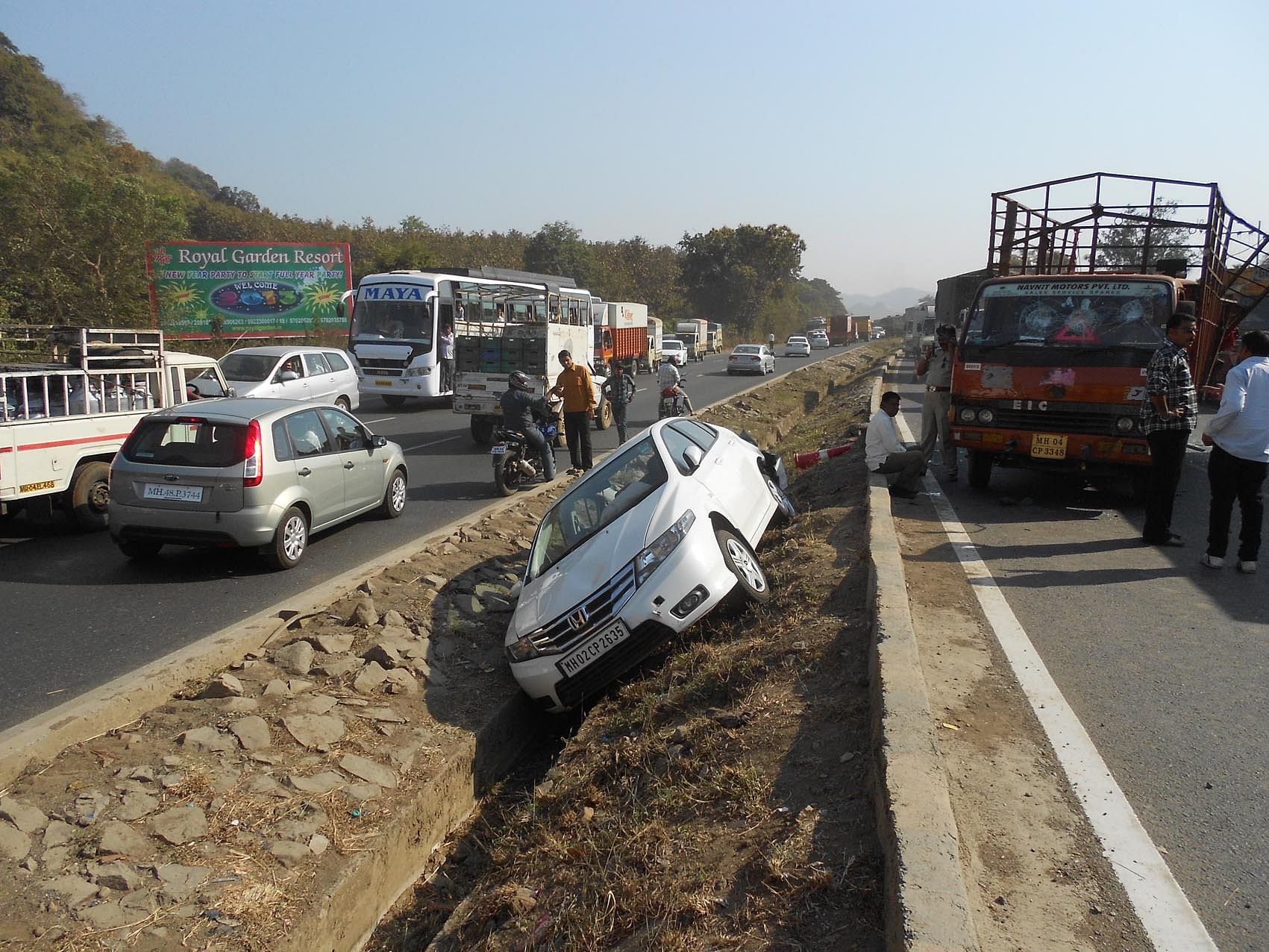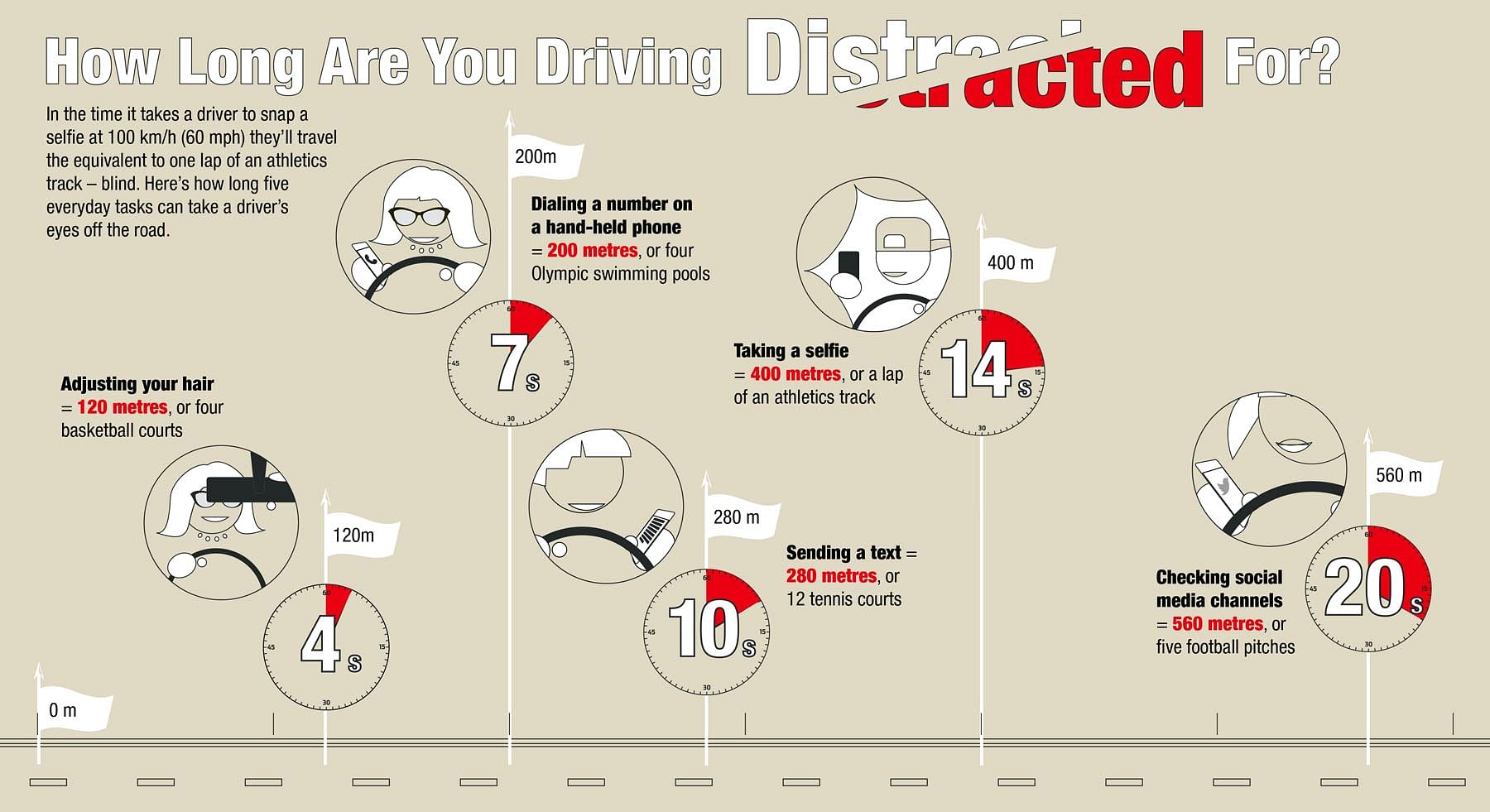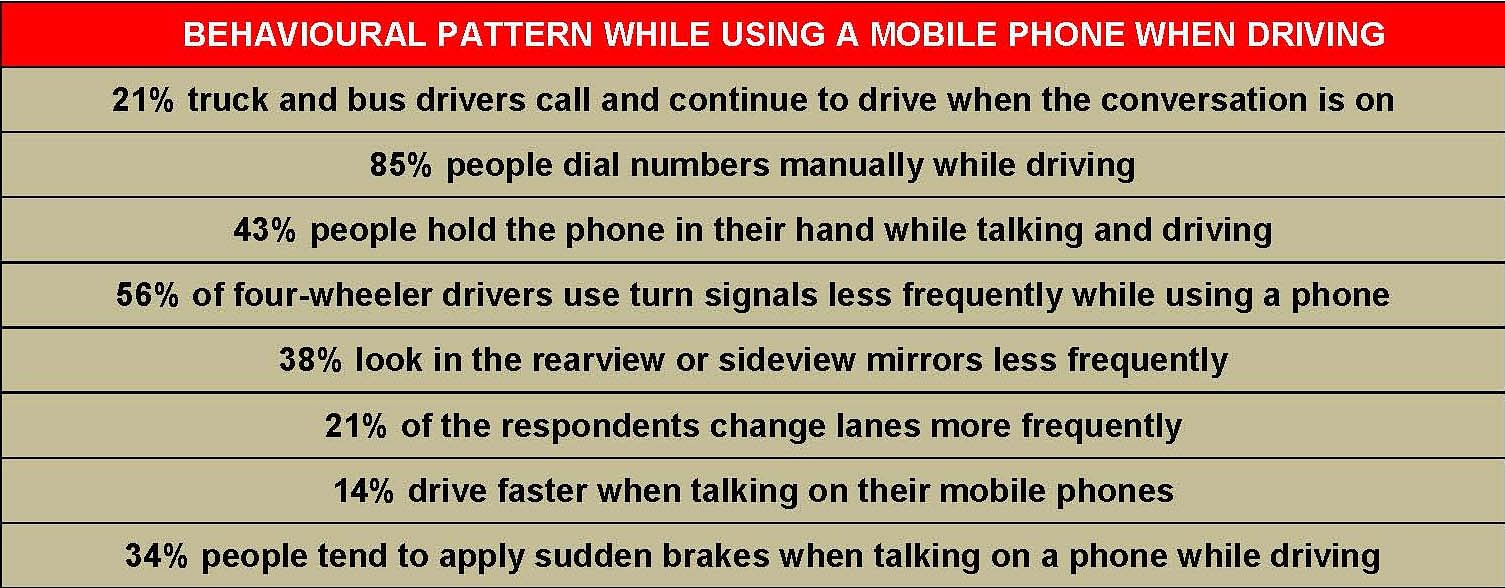First India distracted driving study reveals high level of cellphone use
The study by SaveLife Foundation, which covers 2-wheeler riders and drivers of PVs, trucks, buses and autorickshaws, reveals the behavioural patterns behind cellphone usage while driving and also recommends some interventions.
The SaveLife Foundation, an independent NGO committed to improving road safety and emergency medical care across India, has revealed the findings of India’s first study on distracted driving.
The study, based on a nation survey conducted by TNS India, was conducted with an aim to find the scope and depth of the issue of distracted driving in India, to understand the patterns behind mobile phone usage while driving, and the driver’s perception of how dangerous such behaviour is in various situations.
Scope of the distracted driving study
The study, which covered various categories of vehicle drivers across 8 cities (Delhi, Chennai, Jaipur, Bangalore, Mangalore, Kanpur, Mumbai and Kolkata), was carried out among 1,749 drivers. Within each city, four categories of respondents were surveyed – two-wheeler riders, four-wheeler drivers, truck/bus drivers and autorickshaw drivers. The survey had four broad sections: demography, extent of mobile phone use, effect of mobile phone use on road user behaviour and perception of mobile phone use by road users.
Out of the 1,749 respondents, 45% are using feature phones, 10% are using smartphones without any mobile internet connection and remaining 45% are using smartphones with internet.
Detailed below are the findings of the survey:

As is known, road crashes have emerged as one of the top causes of death among the most productive age groups, and developed into a major public health crisis across the world. According to the World Health Organisation (WHO), road crashes kill 1.2 million people and permanently disable another 50 million every year. Over the past decade, road crash has become the 10th leading cause of death in the world, and is prected to rise to the fifth position by 2030. India is the number one contributor to global road crash mortality and morbidity figures. Every hour, 16 lives are lost to road crashes in India. In the last decade alone, India lost 1.3 million people to road crashes and another 5.3 million were disabled for life.

While it has just 1% of the world’s vehicles, India accounts for over 10% of global road crash fatalities. According to the ‘Road Accidents in India’, 2015 report of Ministry of Road Transport and Highways (MoRTH), 146,133 people were killed in road crashes in 2015 alone including 12,589 children. This number is not only the highest that India has ever recorded in history, but it represents a 53.9% increase over the last decade, and nearly a 10-fold increase since 1970.
The WHO categorises driver distraction as an important risk factor for road crash injuries. The United States Department of Transportation terms distracted driving as one of the most dangerous driver behaviours and an epidemic which has increased with the proliferation of mobile phones.
According to the Telecom Regulatory Authority of India (TRAI), India currently has 1 billion mobile phone subscribers. Due to the high penetration of mobile phones, their use on the road has also increased as proven by this study with 1 out of 2 respondents of this survey having used a phone while driving. Unfortunately, in India, there is no data that is being currently captured at the crash site by authorities to record the connection between mobile phone usage and crashes.
Countries like the USA have been capturing data at the crash site. For example, in 2014, there were 2,955 fatal crashes that occurred on U.S. roadways that involved distraction (10% of all fatal crashes), out of which there were 385 fatal crashes reported to have involved the use of cell phones as distractions (13% of all fatal distraction-affected crashes).
What is distracted driving?
Distracted driving is defined as any activity that diverts a person’s attention from their primary task of driving. These types of activities include the usage of a mobile phone, eating and drinking, conversation with co-passengers, self-grooming, reading or watching videos, adjusting the radio or music player and even using a GPS system for navigating locations. Amongst these, mobile phone usage is said to be the most distracting factor.
Distracted driving has been identified as an important risk factor in road traffic injuries. Mobile phone usage has developed into a primary source of driver distraction as it can induce drivers to take their attention off the road, thus making vehicle occupants more vulnerable to road crashes.
The use of mobile phones while driving causes four types of mutually non-exclusive distractions – visual, auditory, cognitive and manual/physical. While visual distractions cause drivers to look away from the roadway, manual distractions require the driver to take their hands off the steering wheel, auditory distractions mask those sounds that are crucial for the driver to hear while driving and cognitive ones induce the driver to think about something other than driving.

It has been established that distraction caused by mobile phone usage while driving, can deprecate driving performance, for instance increasing reaction time and increasing frequency of lane change. Distractions while driving have now joined alcohol and speeding as leading factors in fatal and serious injury crashes. Distracted drivers are about four times as likely to be involved in crashes as those who are focused on driving.
Behavioural pattern while using a mobile phone when driving
Patterns of driving while using a mobile phone reveal interesting insights as to the attention drivers pay towards their primary activity of driving and how their behaviour in driving gets affected while using a phone. Engaging in another activity alongside driving influences the response of the driver and it also indicates the seriousness of the consequences that can follow.

According to the ‘Mobile Phone Use: A growing problem of driver distraction’ report by the World Health Organization (WHO), distraction caused by mobile phones can impair driving performance in a number of ways, e.g. longer reaction times (notably braking reaction time, but also reaction to traffic signals), shorter following distances, and an overall reduction in awareness of the driving situation.
Using a mobile phone for text messaging while driving has a greater impact on behaviour. This increased risk appears to be similar for both hand-held and hands-free phones, suggesting that it is the cognitive distraction that results from being involved in a conversation on a mobile phone that has the most impact upon driving behaviour, and thus crash risk.
Recommended interventions
It is evident from the distracted driving survey that despite being a threat to the safety of a road user, use of mobile phone is prevalent among Indian drivers. To reduce the use of mobile phones while driving, the study recommends the following interventions:
Effective legislation: Setting in place an effective legislative framework is paramount and the first step in tackling any risk factor associated with road safety. The Motor Vehicles Act, 1988, the sole legislation dealing with road safety in India, does not expressly specify the use of a communication device to be a violation.
At present, the enforcement agencies use the provision under Section 184 viz. ‘Driving Dangerously’ and interpret its text to include use of mobile phones while driving. In the Motor Vehicles (Amendment) Bill 2016 which was passed in the Lok Sabha on April 10, 2016, the proposed amendment to Section 184 has included the ‘use of handheld communications devices while driving’ to encompass driving in a manner which is dangerous to public in its definition. The proposed maximum penalty for the offence has also been increased from Rs 2,000 to Rs 5,000, and the term of imprisonment has been increased from six months to one year.
Visible and sustained enforcement: A visible and sustained enforcement mechanism has been proven to be an antidote for tackling all the risk factors contributing to road crash deaths. For a stronger and enhanced legislative framework to be effective, enforcement targeting mobile usage at a sustained level is crucial.
Data collection: The absence of robust data, specifically related to crashes caused due to the use of mobile phone is a serious flaw. Police data collection system across the country need to incorporate the use of mobile phone in crashes as a field to be compulsory filled by investigating officers.
The Ministry of Road Transport and Highways, government of India on February 21st, 2017 has released a revised Road Accident Data and Reporting Format recommended to be used by all State Governments and UT Administrations and it does have in Column 13, ‘Use of Mobile Phone’ as one of the options to ascertain the type of traffic violation that contributed to the crash. This new format should be adopted and implemented by police stations across the country.
Powerful public campaigns: As recorded in this study, a high proportion of people do accept that using mobile phone while driving is dangerous and they also do not feel safe when they are passengers and find the driver using mobile phone.
Along with strong legislation and effective enforcement, powerful messages through public campaigns need to be imparted in a sustained manner.
Company policies: Companies occupy a unique position of influencing road user behavior as they have workforce that is compelled to follow institutionalised policies. Every company needs to have a ‘Health, Safety and Wellbeing Policy’ with a clear directive to its employees to follow safety rules on the road.
Also read:
India's high rate of road accidents
Smartphone users in Europe continue to indulge in unsafe road use
RELATED ARTICLES
Bajaj Auto launches new Chetak 3503 at Rs 110,000
The Chetak 3503, with a claimed range of 155km, 63kph top speed and a slower charging time than its 35 Series siblings, ...
Hyundai walks the eco talk with biogas plant, material recovery plant in Gurugram
Operational since October 2022, the facility targets sustainable waste management in Gurugram by undertaking scientific ...
Rajiv Bajaj reappointed MD and CEO of Bajaj Auto for five-year term
Bajaj Auto’s Board of Directors has approved the re-appointment of Rajiv Bajaj as the company’s MD and CEO for another f...






 By Autocar Professional Bureau
By Autocar Professional Bureau
 28 Apr 2017
28 Apr 2017
 32003 Views
32003 Views









